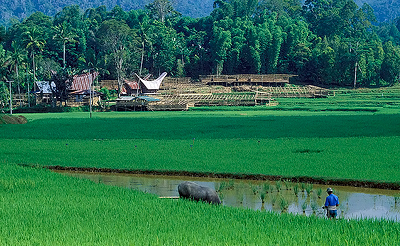Valery Giscard d'Estaing Boulevard
Building GANAMET
You are here : Home » Sustainable Development » Efficient management of land and water resources can improve food security.
Efficient management of land and water resources can improve food security.
The nature of agriculture is changing. Farmers across the world struggle to produce more food while facing changing rainfall patterns, a warmer world, and increased competition over land and water. Ecosystem degradation, declining soil fertility, and water stress add to these land use pressures.
Nowhere are these challenges more severe than in sub-Saharan Africa’s drylands. Farmers in dryland regions like the Sahel must grapple with drought, unpredictable rainfall, and depletion of soil nutrients. At the same time, sub-Saharan Africa is one of world’s poorest regions. Roughly 200 million people—a full 27 percent of the population—are undernourished. Forty percent of children under the age of five are stunted due to malnutrition.
What Is Conservation Agriculture?
In response to continued land degradation, a set of techniques designed to improve soil fertility and water use efficiency has become widespread, particularly on large commercial farms. These techniques, together referred to as “conservation agriculture,” are based on three linked practices:
- Minimal soil disturbance by reducing the amount of tillage or adopting “no-tillage” techniques
- Retention of crop residues or maintenance of a cover crop
- Crop rotation or diversification of crop species grown in sequence and/or associations.
- Conservation agriculture is among a group of practices that provide a “triple win” of increased agricultural productivity, enhanced resilience to climate change, and sequestration of carbon.
But while the challenge is great, so is the opportunity. Innovative farmers have demonstrated how agroforestry and other relatively simple practices can significantly boost food production in Africa’s drylands. In fact, according to a new WRI working paper, improving land and water management on just 25 percent of sub-Saharan Africa’s 300 million hectares of prime cropland would result in an additional 22 million tons of food. This strategy could go a long way towards sustainably feeding Africa—and the world.
Read more on wri.org.



